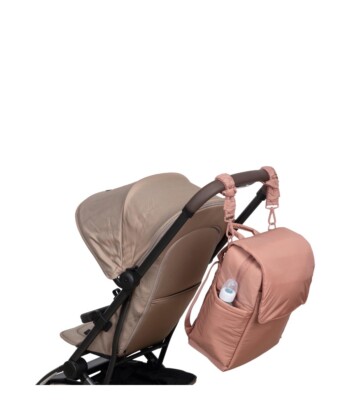Gone are the days of cringing at a crying baby on board or getting stuck with a middle seat. Today, travelers face a bigger (more terrifying) concern: winding up with a wild animal for a seatmate.
Just last month, that scenario became a reality for Delta passengers when a traveler brought her live turkey on board a flight from Seattle to Utah. It wasn’t long before photos of the fowl, which had its own seat, made headlines. So how exactly did a bird end up on board? The turkey was registered as an emotional support animal, which according to the Air Carrier Access Act can legally accompany its owner on a plane. Unlike a service animal that’s trained to aid someone with a disability (guide the blind, alert the deaf), an emotional support animal provides comfort for an owner with emotional or psychological disabilities, and is not required to undergo formal training. Both, however, exempt the passenger from airline fees and having to stow their companion under the cabin.
Increasingly, what began as a necessity for those who couldn’t cope without the support of an animal has become a trend for people looking to save a few bucks and enjoy the luxury of in-flight snuggling. And it’s not just the quantity, but types of animals (think: tarantulas, ponies, ferrets, pigs) encountered at 30,000 feet that are making jaws drop.
To have your companion registered, all you need is a letter from a licensed mental health professional stating that you’d benefit by having an emotional support animal on board. You can even get one from the comfort of home—a number of websites dole out these official letters for a small cost.
One such site, AnimalCompanions.org, claims to closely vet all applicants. The company’s founder says they receive approximately 200 requests per month—but issued just 75 approvals last year. The letters, which cost $179, are provided after a qualifying questionnaire (i.e. have you been formally diagnosed with a mental-health related condition by a medical professional?) followed by a 15-minute Skype appointment with a psychologist.
“We have a culture where people don’t want to put their dogs under the aircraft. They’ll bring them at any cost,” says Eric Lipp, the founder of Open Doors Organization, a nonprofit for people traveling with disabilities. Lipp calls it “the Paris Hilton effect,” referring to the socialite notorious for carrying her pint-sized pup around town like the season’s hottest accessory.
Businesses that fail to make accommodations for a legitimate service animal can face a $55,000 fine (and $100,000 for a second violation), so many don’t ask questions. Melanie Hinton, a spokesperson for Airlines for America, says, “We trust our passengers are honest in communicating their need for service assistance animal support.”
Still, it is against the law to bring an emotional support animal into restaurants, movie theaters, boutiques and more—but many owners find it easy to skirt the rules. Patricia Marx, a writer at The New Yorker, went undercover to test the limits. “My biggest surprise was that no one cared if I took an animal anywhere because they don’t know the law,” says Marx, who successfully toted a 15-pound turtle to the Frick Collection, a snake to the Chanel boutique, and a pig to the Four Seasons. “They thought it was cute and took my picture. The only time I wasn’t allowed to take an emotional support animal somewhere illegal was when I had the snake and Mercer Kitchen denied me, even with the letter. It’s interesting how much you can get away with. If you say it’s legal, people assume it is. It might just be New York though.”
Marc Philippe Eskenazi, who followed up Marx’s exposé with a video the next year, had a similar experience. “I liked being in the Plaza with a pig,” he recalls. “When I was asking for room rates, the pig snorted and the echo turned heads. Part of me expected them to be pretentious, but I left thinking they were cooler than I would have guessed.” Since then, not much has changed. “I saw a woman bring her cat into a restaurant the other day. The waiter was allergic, and you could tell the woman was defensive,” says Eskenazi. “She had a pre-rehearsed line about how no one cares that she could be allergic to someone’s perfume. Where food is concerned, she could be endangering people’s health.”
But complaints do exist. The U.S. Department of Transportation says in 2014, ESAs represented 40 percent of all service animal complaints—in 2015, that number rose to 70 percent. Canine Companions for Independence, a nonprofit that provides trained service animals to people with disabilities, submitted a petition to the Department of Justice requesting it crack down on the sales of all forms of fake ESA identifications. More recently, they’ve received over 30,000 signatures. Those caught misrepresenting a pet as a service animal could be subject to fines, community service hours and even jail time (penalties vary state-by-state).
“The message here is that you’re making it harder for people that really need them. People have an emotional attachment to their pets, but they don’t understand the consequences they’re causing,” says Lipp. “You know, a lot of times my advice is: drive.”










































